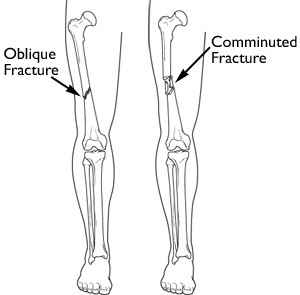

These can become lodged in the capillary beds of the lungs, leading to respiratory distress and if not treated quickly, death. For example, a fractured diaphysis of the femur has the potential to release fat globules into the bloodstream. While some fractures can be minor, others are quite severe and result in grave complications. Open reduction requires surgery to expose the fracture and reset the bone. When a broken bone is manipulated and set into its natural position without surgery, the procedure is called a closed reduction. If the bone is not reset correctly, the healing process will keep the bone in its deformed position. It will heal whether or not a physician resets it in its anatomical position. Describe the steps involved in bone repairĪ fracture is a broken bone.Differentiate among the different types of fractures.For more information or to schedule an appointment, please call 21.

We also address hairline fractures and take every break and orthopedic condition seriously, because it is. The Center for Orthopaedic Surgery and Sports Medicine treats traumatic bone fractures and provides trauma care. It may not be apparent in some cases that a bone has broken, but if painful symptoms are present and unabated, don’t take a chance. In such a case the bone may or may not be visible through the wound.
#OBLIQUE BONE FRACTURE SKIN#
Either the bone breaks through the skin or it is exposed through a wound that occurs naturally at the time of the accident.

Distal positioning refers to a break that is away from the center.Anterior breaks are toward the front of the body.There are three anatomical terms related to bone fractures and help describe where on our bodies the fracture occurred. Knowing which sort of fracture you have will allow your orthopedist to provide tailored care, and will also help you determine how long it may take you to recover. Understand that a fracture is the same as a break, though some fractures/breaks are less severe than others. Defining Termsīones break due to an outside force, such as a fall or a car accident they can also fracture due to natural causes such as disease or poor diet. Here is more to know about the different types of fractures. Over the course of a lifetime, it’s highly probable that one of these 206 bones will sustain a fracture. We are born with 270 bones by adulthood many of those bones have fused together, leaving us with 206 bones that support every step and movement we make for the rest of our lives.


 0 kommentar(er)
0 kommentar(er)
